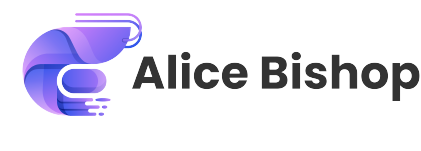7 Tips for Effective Copywriting: Outranking the Competition in Google

Crafting captivating content is crucial in the digital age for grabbing online audiences’ attention and boosting organic traffic to your website. As an aspiring SEO specialist, you know that creating compelling copy is essential to engage viewers and outrank competitors on search engine results, especially on Google. This article shares seven potent tips to enhance your copywriting abilities and improve your chances of rising above the competition in search rankings.
Understand Your Target Audience
To excel in copywriting, a strong grasp of your target audience is key. Through thorough research and examination of demographics, interests, and challenges, you can tailor content to their precise needs. Understanding their tone and language preferences will enable you to create compelling copy that resonates with their unique identity, boosting engagement and sharing potential.
Perform Comprehensive Keyword Research
Effective SEO copywriting relies on a strong foundation of targeted keywords. To surpass the competition, it’s crucial to perform thorough keyword research to discover the specific terms and phrases that your desired audience is seeking. Using tools such as Google Keyword Planner, SEMrush, and Ahrefs, you can uncover high-value keywords with significant search volumes and reasonable competition. Strategic integration of these keywords throughout your copy will result in effortless and genuine user engagement.
Craft Captivating Headlines
Boost your website’s traffic with a powerful headline that captivates and entices your audience! To stay ahead of the competition, craft a headline that is rich in keywords and emotionally appealing. Use effective power words, numbers, and thought-provoking questions to arouse curiosity and create interest. By integrating your primary keyword into your headline, you can increase your chances of ranking higher on search engine result pages (SERPs). Don’t miss out on the opportunity to stand out and draw in potential customers with an attention-grabbing headline!
Write Engaging and Relevant Content
To outrank other websites in Google’s search results, prioritize high-quality, engaging content. Produce informative and valuable articles, blog posts, and landing pages that directly address your audience’s pain points and offer practical solutions. Strive for comprehensive, well-researched content that delves deeply into the topic, bolstered by reputable sources and data to establish your credibility. By offering unique insights and a fresh perspective, you’ll stand out from the competition and draw in both readers and search engine bots.
Optimize Meta Tags and Descriptions
Meta tags and descriptions play a crucial role in SEO, though they may seem complex at first. By optimizing these aspects, search engines can better understand the relevance and context of your content, which increases your chances of ranking higher. It’s important to make sure your meta title and description accurately represent the content on your page, while incorporating targeted keywords. Additionally, a well-optimized meta description acts as a mini-ad that encourages users to click on your link amidst the countless search results.
Enhance Readability and Formatting
Clear and engaging content is crucial in today’s fast-paced digital world. Boost readability by breaking up your content into scannable paragraphs, structuring it with subheadings, and using bullet points and numbered lists. Provide added value to readers and search engines by utilizing descriptive anchor text for internal and external links. By optimizing the readability and format of your copy, you’ll keep users engaged and increase the time they spend on your website, which will ultimately benefit your search rankings.
Incorporate Visual and Multimedia Elements
Enhance User Experience & SEO with Visual & Multimedia Elements. Increase engagement & social shares by incorporating relevant images, videos, infographics, & interactive elements in your copy. Don’t forget to optimize them with descriptive alt text & captions to boost your website’s visibility on search engines. Stay ahead of the competition with a captivating website.
To rise above your competition and attract more organic traffic to your website, compelling copywriting is key. Through understanding your audience, conducting thorough keyword research, crafting powerful headlines, writing engaging content, optimizing meta tags and descriptions, enhancing readability and formatting, and incorporating multimedia elements, you can establish your online presence as an authoritative and captivating resource, earning you higher search engine rankings from Google. Invest in strong copywriting to achieve lasting success and stand out online.



